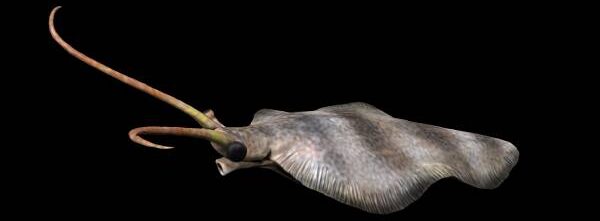Nectocaris pteryx lived during the Middle Cambrian period, approximately 508 to 505 million years ago. From presentient animals branched cephalopods and fish. Both later evolved Simple Sentience. An example of convergent evolution that might suggest sentience is one of the natural stepping stones of life.
The Cambrian and subsequent periods saw the emergence of early cephalopods, ancestors to modern octopuses, squids, and cuttlefish. These ancient cephalopods, navigating the Cambrian seas, possessed a more developed nervous system compared to many contemporaneous organisms, capable of processing information from their environment in sophisticated ways. This evolutionary development marked a significant leap towards simple sentience, with early cephalopods able to exhibit behaviors such as hunting strategies, escaping predators, and possibly even social interactions. The evolution of these early cephalopods highlights a pivotal moment in the history of life, demonstrating the beginnings of nervous system sophistication that would eventually lead to the complex forms of sentience observed in higher animals, including humans.











